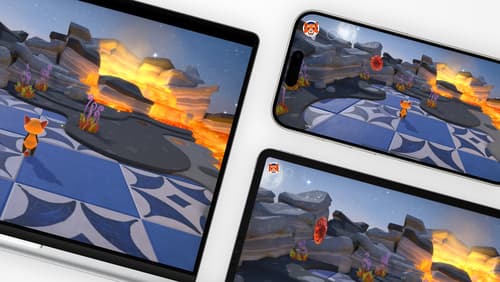How ro develop for all off platforms?
Asked on 2024-10-03
1 search
To develop for all Apple platforms, you can leverage several tools and frameworks introduced and discussed at WWDC. Here are some key points:
-
Swift as a Cross-Platform Language: Swift is officially supported on Apple platforms, Linux, and Windows, with community support extending to platforms like WebAssembly. This makes Swift a versatile choice for cross-platform development. What’s new in Swift
-
SwiftUI for UI Development: SwiftUI allows you to build user interfaces that can be adapted across all Apple platforms. It provides a consistent look and feel while allowing for platform-specific customizations. SwiftUI essentials
-
Xcode for Unified Development: Xcode is the primary IDE for developing apps on Apple platforms. It supports targeting multiple Apple devices with a common codebase, which is particularly useful for game development. Port advanced games to Apple platforms
-
RealityKit for Spatial Computing: RealityKit APIs enable you to create spatial computing experiences that can run across iOS, macOS, and visionOS with minimal code changes. Discover RealityKit APIs for iOS, macOS and visionOS
-
Cross Compilation: Cross compilation allows you to build an app on one platform and run it on another, such as developing on macOS and deploying to Linux. This is facilitated by a fully static Linux SDK for Swift. What’s new in Swift
These tools and frameworks provide a robust foundation for developing applications that can run across multiple Apple platforms, ensuring a seamless user experience.

Platforms State of the Union
Discover the newest advancements on Apple platforms.

Port advanced games to Apple platforms
Discover how simple it can be to reach players on Apple platforms worldwide. We’ll show you how to evaluate your Windows executable on Apple silicon, start your game port with code samples, convert your shader code to Metal, and bring your game to Mac, iPhone, and iPad. Explore enhanced Metal tools that understand HLSL shaders to validate, debug, and profile your ported shaders on Metal.

Design advanced games for Apple platforms
Learn how to adapt your high-end game so it feels at home on Mac, iPad, and iPhone. We’ll go over how to make your game look stunning on different displays, tailor your input and controls to be intuitive on each device, and take advantage of Apple technologies that deliver great player experiences.
